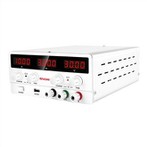Applications of Multimeter Testing in Engine Electronic Control Systems
(1) Unless otherwise specified during the testing process, a pointer multimeter cannot be used to test computers and sensors. A high impedance digital multimeter should be used, and the internal resistance of the multimeter should not be less than 1OK Ω.
(2) Firstly, check the condition of fuses, fuses, and wiring terminals. After troubleshooting these areas, use a multimeter for inspection.
(3) When measuring voltage, the ignition switch should be turned on, and the battery voltage should not be lower than 11V.
(4) When checking waterproof connectors with a multimeter, be careful to remove the leather cover and do not apply excessive force to the terminals when inserting the test probe into the connector for inspection. During testing, the test probe can be inserted from the back end with wiring or from the front end without wiring.
(5) When measuring resistance, gently shake the wire in both vertical and horizontal directions to improve accuracy.
(6) When checking for a circuit break fault, the computer and corresponding sensor connectors should be disconnected first, and then the resistance between the corresponding terminals of the connector should be measured to determine if there is a circuit break or contact fault.
(7) When checking for a short circuit fault in the grounding of the circuit, the connectors at both ends of the circuit should be disconnected, and then the resistance value between the tested terminal of the connector and the vehicle body (grounding) should be measured. A resistance value greater than 1M Ω indicates no fault.
(8) Before disassembling the electronic control system circuit of the engine, the power should be cut off first, that is, the ignition switch should be turned off (OFF), and the wiring on the battery pole should be removed.
(9) The symbol for the grounding terminal on the connector varies depending on the vehicle model, and attention should be paid to identifying it by referring to the maintenance manual.
(10) When measuring the voltage between two terminals or between two lines, the two probes of the multimeter (voltage range) should be in contact with the two terminals or wires being measured.
(11) When measuring the voltage of a terminal or a circuit, the positive probe of the multimeter should be in contact with the terminal or circuit being measured; And connect the negative probe of the multimeter to the ground wire.
(12) Checking the conductivity of terminals, contacts, or wires refers to checking whether the terminals, contacts, or wires are energized and not disconnected. The resistance value can be measured using a multimeter in the resistance range for inspection.






